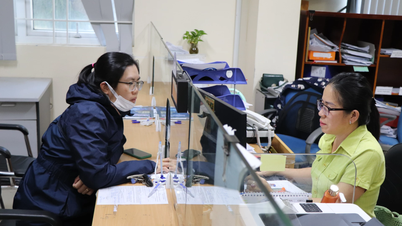Coffee prices fell sharply
On the London Stock Exchange, the January 2026 robusta coffee contract closed on November 11 at $4,564 per ton, down $59 per ton (1.28%) from yesterday. The March 2026 futures contract also lost $65 per ton, or 1.43%, to $4,489 per ton.

Illustration photo. Photo: Internet
At the same time, the New York floor recorded arabica coffee prices for December 2025 delivery down 0.17% (0.75 US cents/pound), to 414 US cents/pound. The contract for March 2026 delivery increased slightly by 0.14% (0.55 US cents/pound), reaching 393.7 US cents/pound.
On the morning of November 12, 2025, the Central Highlands region is purchasing coffee in the range of 117,600 - 118,500 VND/kg, a sharp decrease of 300 - 1,200 VND/kg compared to yesterday.
In Lam Dong , Di Linh, Bao Loc and Lam Ha areas all decreased by 600 VND, trading at 117,600 VND/kg.
In Dak Lak , the purchase price in Cu M'gar today reached 119,000 VND/kg, down 600 VND compared to yesterday; while in Ea H'leo and Buon Ho it is at 118,900 VND/kg.
In Dak Nong , Gia Nghia and Dak R'lap areas recorded a decrease of 1,200 VND, to 119,700 and 118,500 VND/kg, respectively.
In Gia Lai area, the price in Chu Prong is currently at 118,600 VND/kg, while Pleiku and La Grai are both trading at 118,500 VND/kg, down 300 VND compared to yesterday.
The outlook for Vietnam’s coffee market is positive as global production has declined, especially in Brazil and Indonesia – two countries heavily affected by extreme weather. With stable supply and good bean quality, Vietnam is expected to expand its export market share in the coming time.
In addition, a weaker US dollar and limited supplies in major producing countries continue to support coffee prices. In Colombia, October production fell 10% year-on-year, raising concerns about a shortage of Arabica supplies, thereby contributing to the increase in prices on the international market.
According to the mid-2025 report of the US Department of Agriculture (USDA), global coffee production in the 2025/2026 crop year is forecast to reach 178.7 million bags, while consumption demand is about 169.36 million bags - a surplus of nearly 10 million bags. Despite the slight surplus, experts believe that the coffee market will remain stable, with prices expected to remain high in the short term.
Pepper prices remain stable at high levels
Opening this morning, pepper prices in Dak Lak decreased by 500 VND/kg, while other localities remained stable compared to yesterday morning, fluctuating from 145,000 - 147,000 VND/kg.
In Dak Lak, the purchase price is currently at 146,500 VND/kg, down 500 VND/kg compared to yesterday. In Chu Se (Gia Lai), the price remains at 145,000 VND/kg, unchanged. In Dak Nong, pepper remains at 147,000 VND/kg.
The Southeastern region recorded unchanged pepper prices. Ba Ria - Vung Tau continued at 145,000 VND/kg; Binh Phuoc also remained at 145,000 VND/kg like yesterday.
According to an update from the International Pepper Community (IPC), the most recent trading session showed that the price of Lampung black pepper (Indonesia) reached 7,127 USD/ton, up 0.22%, while the price of Muntok white pepper was at 9,771 USD/ton, up 0.23%.
The price of Brazilian ASTA 570 black pepper is currently at USD 6,100/ton; while Malaysian ASTA black pepper is stable at USD 9,200/ton and ASTA white pepper is at USD 12,300/ton.
Vietnamese black pepper prices remain high, with 500g/l traded at 6,400 USD/ton, 550g/l at 6,600 USD/ton; white pepper at 9,050 USD/ton.
According to the latest report of IPC, the pepper market in early November 2025 showed mixed results among producing countries. Vietnam was the only country to record an increase in domestic pepper prices due to stable demand and scarce supply, while export prices remained unchanged, reflecting a stable trade situation.
Experts predict that domestic pepper prices will continue to rise in the final months of the year as export demand increases sharply during Christmas and New Year. Normally, global pepper imports increase by 10-15% during this period, while domestic supplies are depleted and the new harvest has not yet begun, creating support for prices.
In Vietnam, the rainy season has been prolonged in pepper growing areas, especially in the Central region after Typhoon Kalmaegi. Many pepper gardens are in the fruit development stage, while the Central Highlands recorded early rains, causing the plants to flower unevenly but develop better. Weather factors are expected to significantly affect the yield of the upcoming harvest.
Source: https://doanhnghiepvn.vn/kinh-te/gia-nong-san-ngay-12-11-2025-ca-phe-lao-doc-ho-tieu-van-neo-o-muc-cao/20251112081958735







![[Photo] Deep sea sand deposits, ancient wooden ship An Bang faces the risk of being buried again](https://vphoto.vietnam.vn/thumb/1200x675/vietnam/resource/IMAGE/2025/11/13/1763033175715_ndo_br_thuyen-1-jpg.webp)




























































































![Dong Nai OCOP transition: [Article 3] Linking tourism with OCOP product consumption](https://vphoto.vietnam.vn/thumb/402x226/vietnam/resource/IMAGE/2025/11/10/1762739199309_1324-2740-7_n-162543_981.jpeg)







Comment (0)